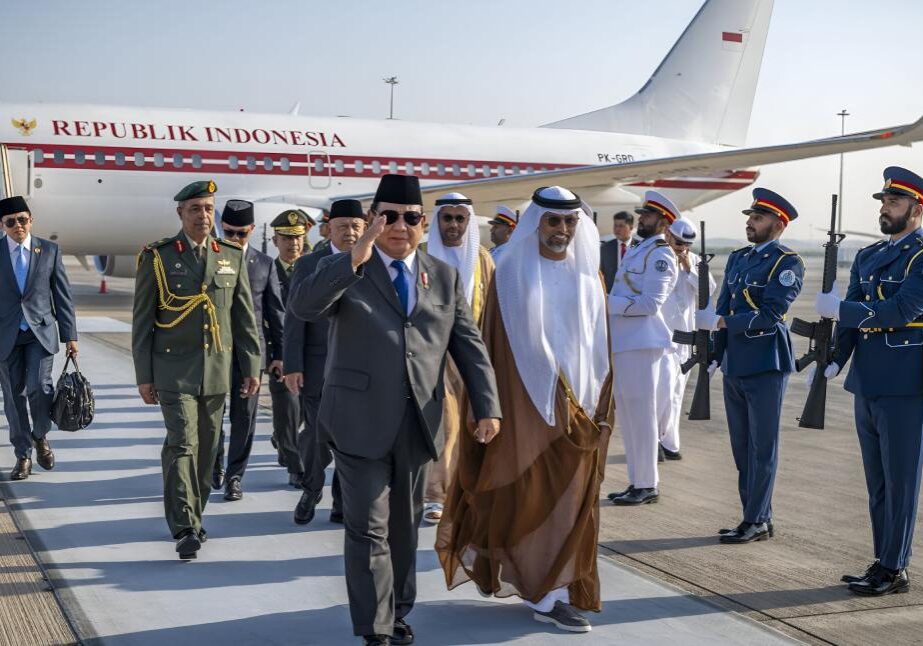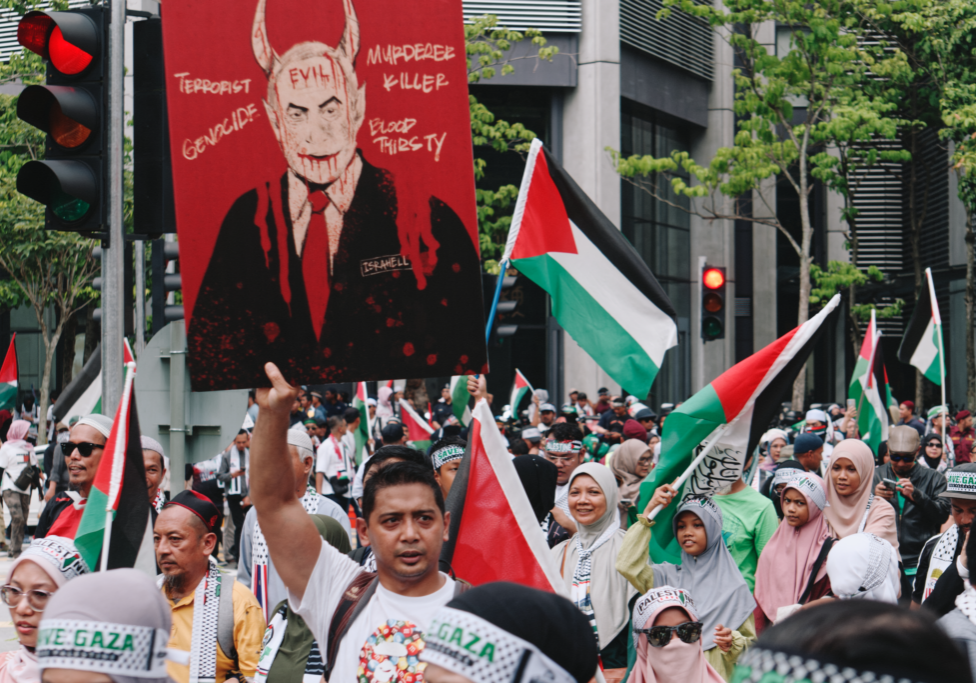Australia/Israel Review
Abu Sayyaf – Jihadists or ordinary thugs?
Oct 31, 2014 | Zachary Abuza

Zachary Abuza
The Abu Sayyaf Group (ASG) has returned to the international spotlight following its July pledge of allegiance to ISIS and its 24 September threat to behead a 71-year-old German hostage unless a US$5.6 million ransom was paid and Germany pledged to quit the coalition attacking the Islamic State. Both moves were opportunistic attempts to get back into international media attention following years of decline.
Today, the ASG is a localised kidnap for ransom gang with few if any ties to global terrorism. That’s not to write it off: Its resurgence comes at a time when the United States is drawing down its presence in the southern Philippines, and this will give the resilient ASG a new lease on life.
While the ASG has had pretensions of being part of the global jihad, such as when it gave several members of Jemaah Islamiyah sanctuary following the 2002 Bali bombing, the ASG has since degenerated. It still engages in bombings against civilian targets, but these are small and localised.
The ASG has not targeted Manila or Davao in several years. The largest mass casualty attack came on 28 July when gunmen attacked two minivans on Jolo Island, killing 25 including several women and children. Although the ASG is still able to ambush the Armed Forces of the Philippine (AFP), such as with the 21 August IED attack that wounded 10 soldiers, kidnapping for ransom operations are its primary modus operandi.
The ASG has been trying to increase the number of foreign hostages it holds. In 2014, the ASG raided Malaysia’s Sabah state four times – resulting in the death of a policeman and the kidnapping of two Malaysians and two Chinese citizens. Another Chinese citizen was kidnapped in Zamboanga, while two German nationals were taken from their sailboat on 26 April. The ASG has held two Dutch nationals since early 2012. Many of its victims are women and also include an eight-year-old girl.
Roughly 20 individuals have been kidnapped so far in 2014. In that same period of time, the ASG has released 20 hostages (several had been kidnapped in 2013), almost all of them following the payment of ransoms. The number of releases is historically unprecedented. The ASG currently holds between 11 and 13 hostages.
The kidnappings are not ideologically motivated. Days before the execution was scheduled, the ASG opened channels for negotiation. Although one of the German hostages was photographed sitting in his own grave in front of an ISIS flag, the ASG released the couple after US$1.35 million of ransom was paid, with no concession by the Germans on participation in the campaign in Syria.
But it’s also important to understand who in the ASG undertook the kidnapping or is holding the hostages. The German couple was held by Radulan Sahiron who, since the 1990s, has always been in it for the money. He is no ideologue.
Part of the problem is that while we call the ASG a “group”, it is neither cohesive, nor hierarchical. It is a collective of rival gangs with no leadership, spread across a large territory with poor communications and operating autonomously. Khair Mundos, who was arrested in Manila in June 2014, admitted to having very contentious relations with another ASG chieftain, Isnilon Hapilon, and confessed to the group being “directionless.” The last attempt to consolidate power based on some notion of ideology was by Khadaffy Janjalani, who was killed in 2007.
Philippine security officials are concerned that Alhabsi Misaya is trying to renew such efforts now. Thought to be in his mid-30s and the leader of recent raids on Malaysia, Misaya appeared in a 2007 video in which he decapitated seven men working on a USAID project. Malaysian authorities are concerned that two of their nationals who have been recruiting for ISIS are based with him.
The ASG is resilient. It has a large armed community in its midst from the former Moro National Liberation Front (MNLF) insurgency that feels betrayed by the government, angry at the failure of their September 2013 putsch to establish the “Bangsamoro Republik,” and at the success of the current peace process with the Moro Islamic Liberation Front (MILF), which broke away from the MNLF. Poverty and joblessness create an endless source of recruits, all in dense jungle terrain that favours the defence.
But its ability to vacillate from a terrorist organisation with a modicum of ideology and defined sectarian targets to outright criminality also gives it resiliency. In the past few years, it’s been all kidnapping for money, but that gives them the resources to recruit and re-arm, while decreasing the pressure from security forces to finish it off.
Not surprisingly, the Philippines has demonstrated little urgency with the recent crisis. It was just five days before the deadline to execute the German nationals that the AFP chief showed up in Jolo and ordered the deployment of US-trained Scout Rangers and sniffer dogs, prompting the question, why weren’t the best counter-insurgent forces already deployed? The Government attributed the release of the Germans to “intensified law enforcement operations,” but then ceased offensive operations despite the obvious lesson that the ASG must inevitably draw: kidnapping westerners in the guise of ISIS terrorism is very profitable.
In sharp contrast has been Malaysia, which has been on heightened alert since early 2013 when armed men operating in the name of the Sultan of Sulu raided Sabah (the Malaysian province on Borneo closest to the southern Philippines) – an event that left 62 people dead. After four raids on Sabah in the summer of 2014, including one that led to the death of a policeman and the kidnapping of another, the Malaysian Maritime Enforcement Agency stepped up patrols, while the Royal Malaysian Navy asked for shoot on sight authority for any suspicious vessels. Although the latter request was rejected by the Attorney General, both the parliament in Kuala Lumpur and the Sabah Government demanded a more forceful response. Prime Minister Najib Razak allocated RM660 million (A$182 million) in the 2015 budget to increase security on Borneo. The Government has approved the deployment of two battalions (1,280 personnel), new camps, an aerial squadron from peninsular Malaysia, along with upgraded radar.
Malaysia continues to view the ASG as a cog in the terrorist recruitment pipeline for Malaysians. In 2014 alone, Malaysia has arrested 37 terrorism suspects, several of whom had trained in the southern Philippines.
One context of the increased kidnappings is the announcement that the United States is drawing down its team of Special Forces in the Philippines from a high of 600 in 2009 to 320 today. The US has rightfully been concerned about moral hazard and argues that the Philippine armed forces really need to take ownership of the problem, which is now more of a law and order concern than a global terrorist threat. Yet, many are concerned that the AFP is simply not up to the task alone, offering the ASG a new lease on life.
Dr. Zachary Abuza is a professor and analyst of Southeast Asian politics and security, and author of Militant Islam in Southeast Asia: Crucible of Terror (Lynne Rienner, 2003), amongst several other books.






